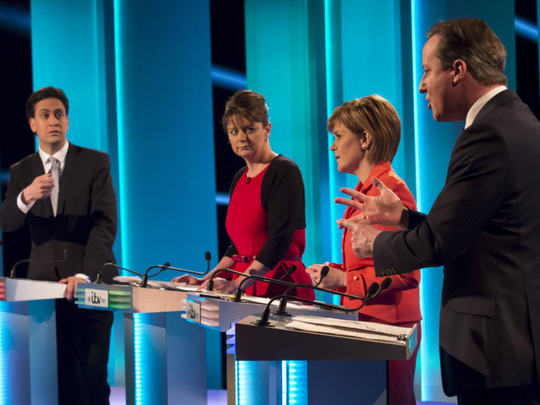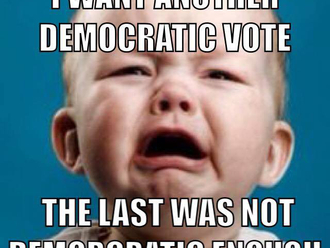
Old rituals die hard. David Cameron took the short car journey from No 10 along the Mall to Buckingham Palace on Monday for a meeting with the Queen that was no longer strictly necessary. Where, once, prime ministers theoretically needed to obtain the sovereign’s permission to dissolve Parliament, the hour of this one’s demise was already enshrined in law.
Indeed, by the time Mr Cameron was ushered into the Royal presence at around noon, it had already happened whether Her Majesty willed it or not. In practice, the Queen has never really had the option to refuse her prime minister a dissolution request; but on this occasion the timetable was set out in statute, removing any lingering doubt that the monarchical prerogative might still apply. The Fixed-Term Parliaments Act (2011) originally stated that dissolution should be 17 working days before the general election, which was to take place on the first Thursday in May of the fifth year after the previous contest, starting with May 7 2015. This was amended to 25 working days a few years ago, bringing the parliament to an automatic conclusion at one minute past midnight on March 30. It is actually possible for the Prime Minister to vary the date of the election by up to two months either way by executive order, though he would need a pretty good reason for doing so. At least we can be grateful that Mr Cameron didn’t decide to soldier on for yet another eight weeks, prolonging an already interminable campaign. Although his visit to the Palace was essentially a courtesy call, therefore, it none the less provided us with the ceremonial of a formal opening to the “real” election campaign. The phoney war is over; now let battle commence. The campaign plans have been drawn up and in each party HQ everyone defers to the grids setting out on which days particular themes are to run and who is to lead the charge. These are inviolable. Nothing alarms election managers more than to be knocked off their carefully charted path by events they had not planned for and cannot control, just as nothing delights those covering elections more when they are. So what pitfalls are in store for the parties over the next six weeks? Is there lying in wait a Gillian Duffy, who so embarrassed Gordon Brown five years ago; or an egg-thrower like Craig Evans, who got a thump from John Prescott for his pains in 2001; or Diana Gould, the radio caller who gave Margaret Thatcher a rough time over the sinking of the Belgrano in 1983? Every election has its “off-grid” moments that disrupt the best-laid plans of the protagonists. The first big hurdle they all need to overcome without falling flat on their faces is this Thursday’s seven-way TV debate, the only event to bring all the party leaders together, although last week’s televised interviews of Mr Cameron and Ed Miliband will have given those voters who bothered to watch their first real taste of the campaign. While that was not a debate, strenuous efforts have been made to declare a “winner” from the Ordeal by Paxman. Labour contends that their man came off better since he confounded expectations by being able to stand his ground and answer rude questions without bursting into tears, which is the least we can hope for from a man who would be prime minister. (Incidentally, in the space of my lifetime we have gone from the oleaginous deference of TV reporters asking prime ministers if they have a message for the nation to treating them all like charlatans and chancers. Is there not a happy medium?) This Thursday’s debate may force one or more of the participants off-message or worse, but I doubt it. The format is too messy, reflecting the polarisation of our politics. It won’t be possible to pursue a single line of questioning with a particular individual, though doubtless they will all gang up on Mr Cameron, which might work to his advantage. The very fact that there are seven participants in itself provides us with the principal theme of this election: its potential for causing great uncertainty and deep anger at the end of it all. Where we once imagined that Nigel Farage would be the most consequential minor party figure on the platform, that role now falls to Nicola Sturgeon of the SNP. Ukip will be lucky to win five seats, even if they do poll well enough to deny the Tories victory in many more. But if the SNP mop up most of the 59 seats in Scotland, as it appears they will, that will be the real story of this election. The two polls published so far this week confirm that the Tories and Labour are effectively neck-and-neck on about 34 per cent of the vote. But this is not level-pegging. While such an outcome would put Labour within striking distance of power, it would leave the Conservatives well short of an overall majority because of the inherent imbalance in the electoral system. This should have been rectified in the last parliament but, in the words of Mr Cameron, the Liberal Democrats “ratted” on a deal to redraw constituency boundaries and even-up the urban and rural electorates. This disparity has been apparent for many years without anything being done to sort it out. In 1992, for instance, the Conservatives received their largest-ever popular vote - 14,231,884 (41.85 per cent) compared with 11,619,306 (34.16 per cent) for Labour, but won a majority of just 21 seats. Arguably, this anomaly should have been dealt with then (it will, in fact, be addressed in 2018, when the number of constituencies is due to fall to 600 under legislation already passed). But the Major government become embroiled in an argument over Europe with its own backbenchers that eventually wiped out its majority altogether. In 1997, Labour won nearly one million fewer votes than Major had done five years previously yet still had a majority of 180. By the same token, the Tories were reduced to 165 seats in 1997 whereas in 2010 Labour, with even fewer votes, managed to cling on to around 260, giving them a platform from which to launch this campaign with a realistic chance of victory. This is why the SNP matters so much, because on current polling projections they can put Mr Miliband into Downing Street in the event of a hung parliament. Over the next 36 days, the party leaders will fight it out over the NHS, the economy, Europe and welfare reform without really scratching the surface of any of these particular issues. Mr Cameron will endeavour to cast off his “posh boy” image and show he is in touch with the lives of voters while Mr Miliband will try to convince enough people he is a potential leader of the country, knowing all the time that his electoral task is a lot easier than his principal opponent’s. But casting a shadow over the whole proceedings is the prospect that the Tories will poll the most votes on May 7, only for Labour to take office with the help of Alex Salmond and Nicola Sturgeon. Unless the Conservatives can pull decisively ahead of Labour, see off the Ukip challenge and hold on to most of the seats they won five years ago, then such an outcome is a real probability. On May 8, expect to hear an angry rumble rising up from the shires.
— The Telegraph Group Limited, London, 2015









